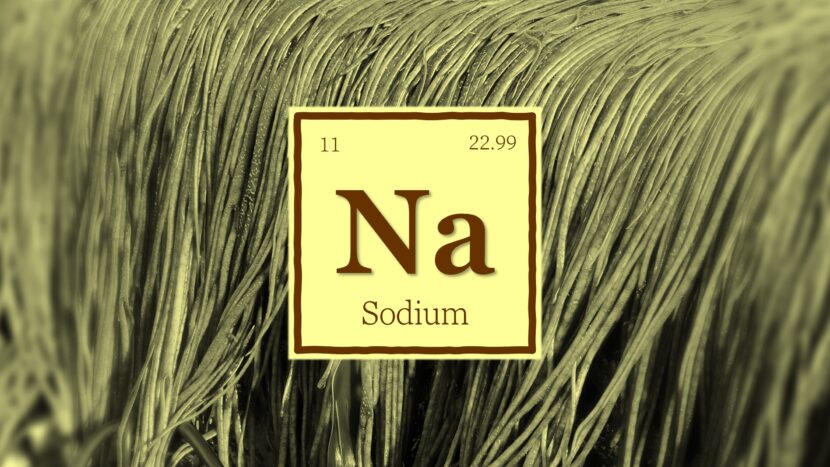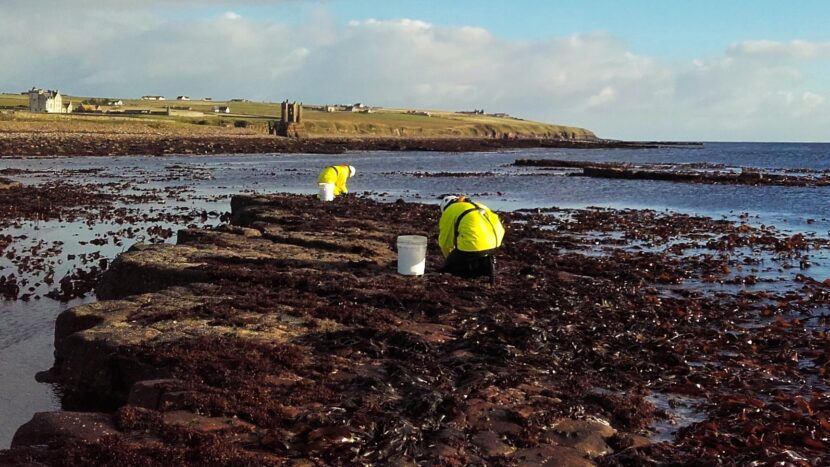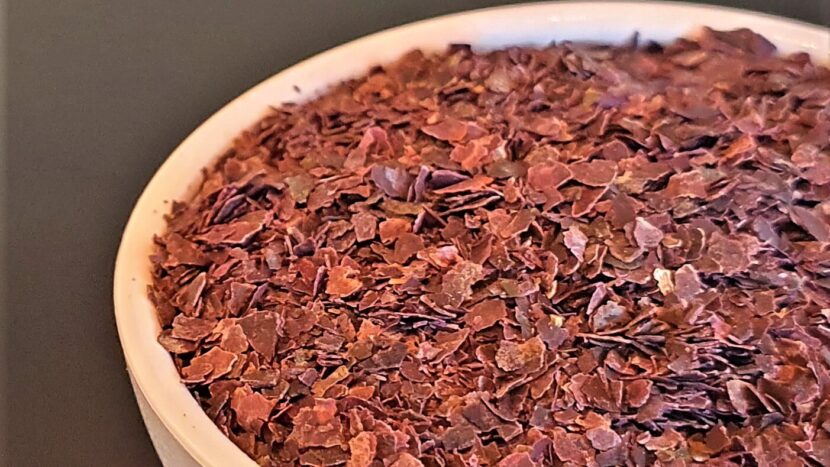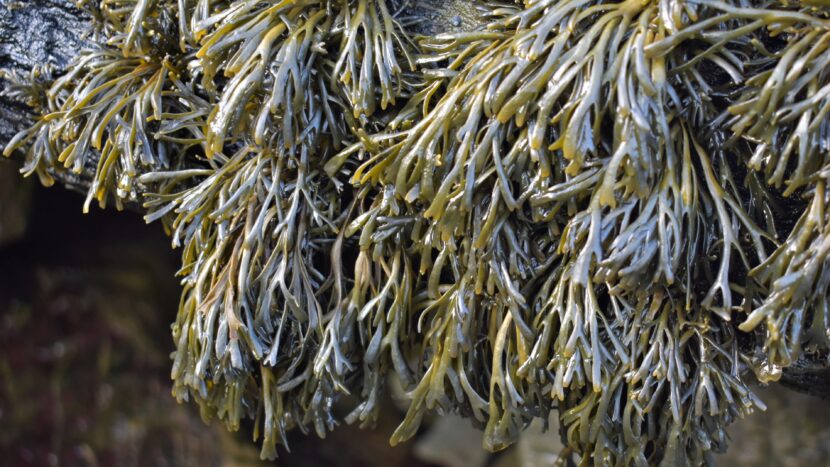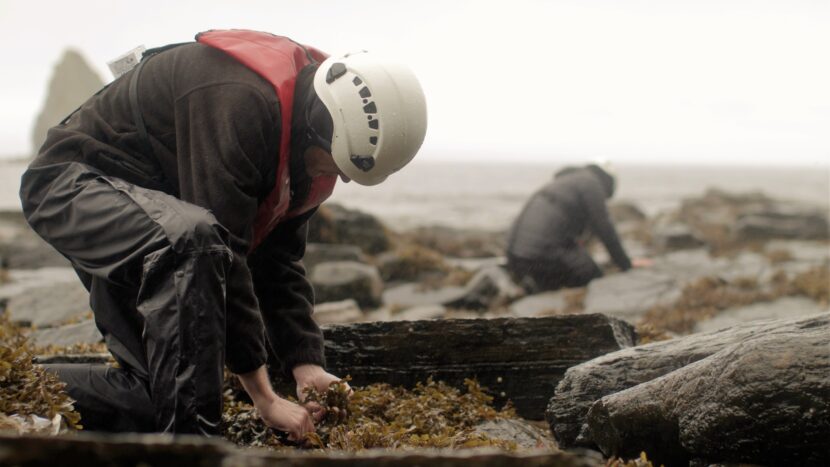Species spotlight: toothed wrack
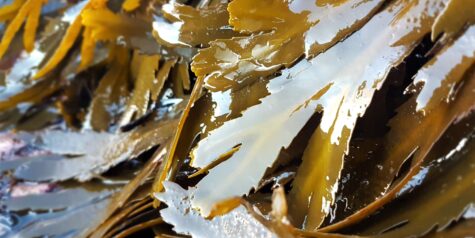
In this article, Peter Elbourne - our CEO - takes a deep dive into a particularly special variety of seaweed: toothed wrack. It is one of the key species in the Horizon Seaweed production schedule. Also, Peter has a personal connection to toothed wrack from his earliest years as a marine biologist.

Toothed wrack thrives on the low shore of rocky coasts
Where we find toothed wrack
Toothed wrack - Fucus serratus - is abundant on the coastline of Caithness. The common name comes from the jagged edge to the flat frond: it is also called serrated wrack and saw wrack. This species grows on the low shore, meaning it generally can only be harvested on spring tides. Toothed wrack will generally reach around 1m in length, perhaps longer when protected among boulders. Over the years, our harvesters have picked toothed wrack at seven different harvest sites on the north and east coasts. The beach where we have gathered the most toothed wrack is by Huna, a short distance west of John O’Groats facing out into the Pentland Firth.

Our harvest site by Huna in Caithness is the ideal location for toothed wrack
Clean seaweed on exposed shores
A range of animals and algae will grow on seaweed. Cutting by hand allows for quality control at the point of harvest. Generally, there is less fouling on wave-exposed coasts because of the random water movement because it is difficult to thrive in such a dynamic habitat. We will see more growth on toothed wrack in rockpools because they offer a degree of shelter.
A noteworthy fouling species for toothed wrack is a tiny coiled tube worm. It has a rare double scientific name of Spirorbis spirorbis. Its chalky shells can cover the fronds of toothed wrack in the right conditions. They are filter feeders, using their tentacles to catch small particles of food that floats by. It is important that we focus our harvest efforts on more exposed shores to help us gather the best quality seaweed. The harvesters will sometimes describe a poor patch of toothed wrack as “too wormy”!
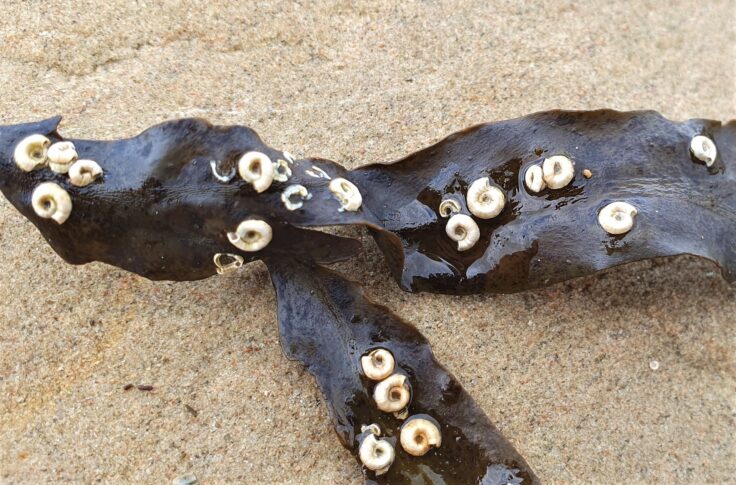
Wrack can often by covered by Spirorbis tubeworms, making it unsuitable for harvesting
Toothed wrack is of particular interest to me as I did my undergraduate dissertation on the community of plants and animals that grow on this species. My research was on toothed wrack growing in sheltered locations with high tidal flow: perfect conditions for an array of biodiversity, because it is a predictable environment with constantly refreshed nutrients. However, this marine life is to be avoided when harvesting.
Unique hairs to increase absorption
One of the really interesting characteristics of toothed wrack is that it is often covered with tufts of fine hairs. At first glance, one might think this is another form of biofouling. Actually, they are a natural part of the growth cycle, rapidly appearing during spring and gradually diminishing over autumn. They are generally absent during the dark, cold days of winter. The correct botanical term is hyaline hairs, which just means transparent, and other related species have them too (e.g. bladder wrack, spiral wrack).
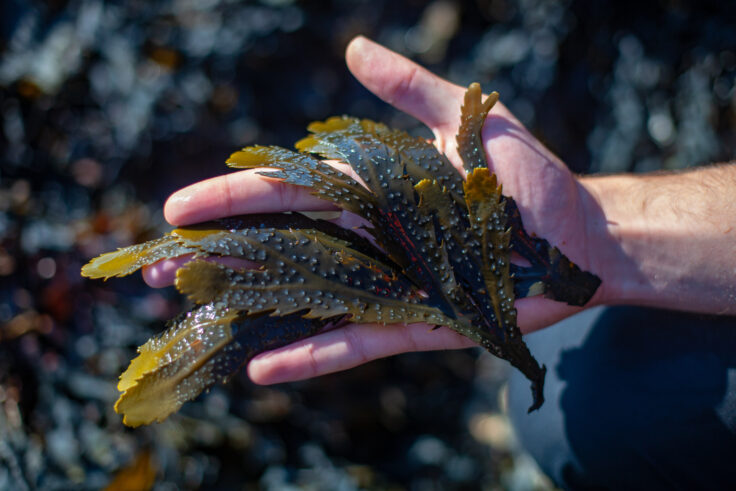
Fine tufts of hair allow toothed wrack to absorb key nutrients during the growing season
The hyaline hairs help increase nutrient absorption, but the exact mechanism is still debated amongst seaweed scientists. It may be higher surface area, increased turbulence over the smooth frond or thinner cell walls. A Danish study recently looked into this if your interest has been piqued.
Interesting nutrient content
We were a partner on a PhD studentship with the Environmental Research Institute in Thurso. Toothed wrack was one of the species with the highest levels of calcium, potassium, magnesium, zinc, manganese and antioxidants. I was a co-author of the paper summarising the results. We have also done some work more recently with the Rowett Institute at the University of Aberdeen, with interesting results regarding levels of vitamin B12. The Horizon Seaweed team is active in various aspects of seaweed research: we will provide further insight on this in a future post. Don't forget our archive of seaweed samples is available for researchers to analyse variations in nutrients and bioactives.
There is an array of applications for toothed wrack. We supply it to manufacturers of food products to provide umami, but with less marine flavour than other species. Toothed wrack is also used in health supplements, often as a blend, to take advantage of its nutritional content. There are also interesting cosmetic uses for this variety.
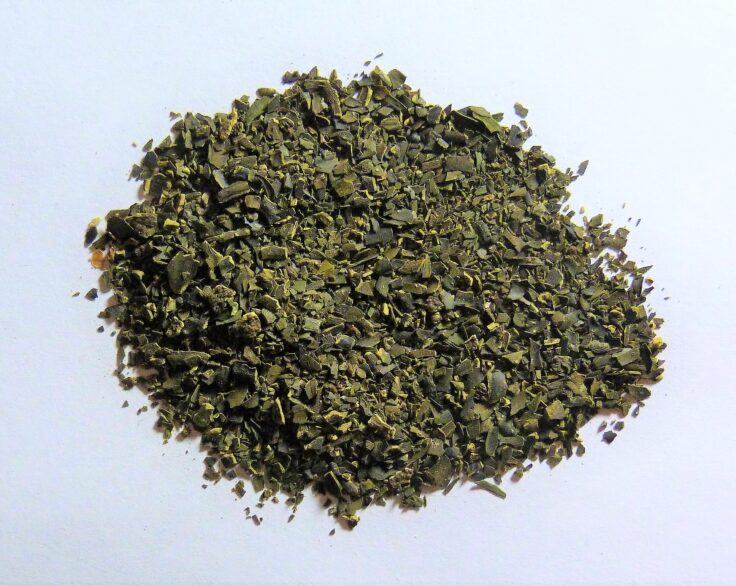
Milled toothed wrack is a great ingredient for different applications (Organic Cut #5 shown)
Contact us for further advice
My experience with toothed wrack runs to over twenty years now and it continues to fascinate me. Please reach out if you would like any more information on toothed wrack or recommendations on how to use this species. Look out for more Species Spotlight posts in the future!
